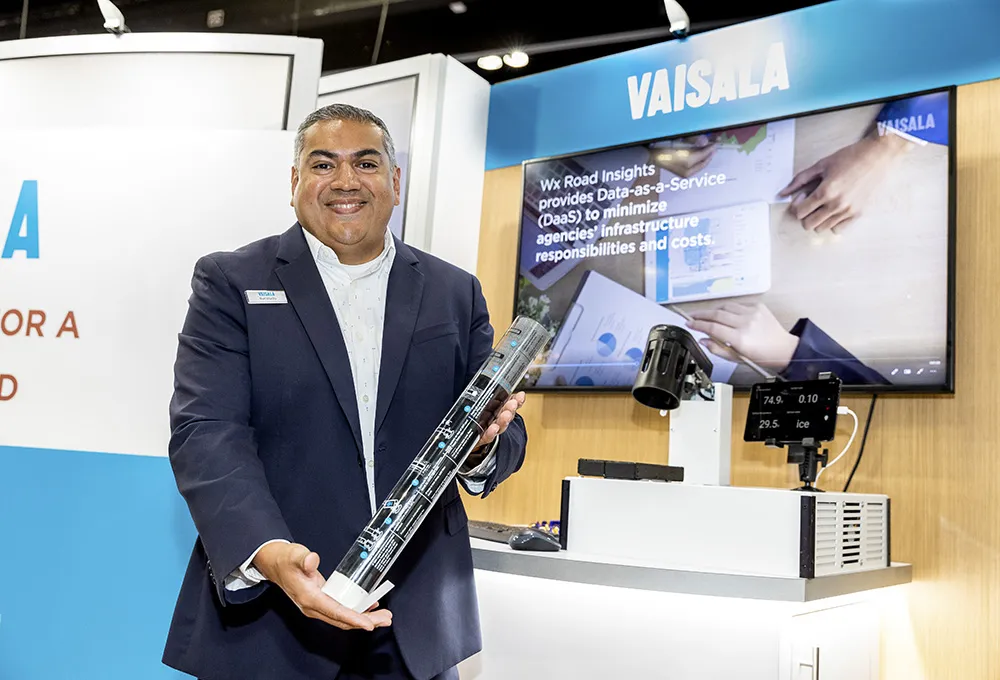
Many of these applications work well in large scale events, but not so well when conditions are just right for a certain spot. For specific locations on a road network that are repeat offenders with respect to weather, how can the communication challenge with these very local and specific spots be solved? Vaisala has the answer, a solution that the company is launching here at Intertraffic.
The company says its solution will provide accurate information in a timely manner. “Vaisala is launching Road Weather Station RWS200 with device control, and together we can solve your local weather challenges,” says Danny Johns, Head of Vaisala’s Road Business.
“It all begins with the Vaisala consultancy team that can perform a thorough site analysis to help determine the weather cause and solution to your problem. Then comes quality, accuracy, and reliability, in the form of sensors, weather station, and collection systems to ensure a solution is never out of order.”
Vaisala has worked with agencies all over the world and has many examples the company will share with visitors to its stand that show returns on investment of over a million euros in a single system. “Our solution is ready today to offer real solutions to real problems and is backed by a team of road weather experts here to help you,” Johns says.









